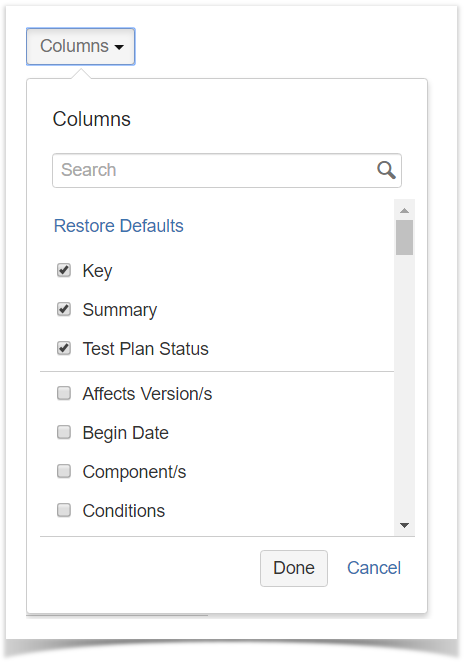Page History
...
Automated Tests are executed through an external tool which controls the execution of tests and the comparison of actual outcomes to predicted outcomes. They can automate some repetitive tasks in a formalized testing process already in place, or add additional testing that would be difficult do perform manually. The following automated Test types are available:
In Jira's administration, you may add other values for the "Test Type" custom field (see list below). For example, you may want to differentiate automated tests that may exist simultaneously in a project.
...
| Test Type custom field possible values | Internally will be handled as Test Type... |
|---|---|
| "Cucumber", "Automated[Cucumber]", "Gherkin", "Behave", "SpecFlow", "Behat" | Cucumber |
| "Generic", "Automated[Generic]" | Generic |
...
Note: "Test Type" custom field values not shown above are not supported.
Cucumber
Cucumber is a tool that executes plain-text functional descriptions as automated tests. The language that Cucumber understands is called Gherkin, which is a business-readable, domain-specific language that describes the software’s behavior without detailing how that behavior is implemented. It is line-oriented language and uses indentation to define structure. Line endings terminate statements (e.g., steps). Either spaces or tabs may be used for indentation (but spaces are more portable). Most lines start with a keyword.
...
Notes: On Jira versions greater or equal to 7.3.0, the Definition field supports Jira's Rich Text Editor. To enable the Rich Text Editor, you have to set the renderer of the definition custom field to Wiki Style Renderer. It is also possible to use Rich Text Editor on Jira versions greater than 7.2.0 by enabling the experimental Rich Text Editor in Jira configurations, but this feature is not totally supported by Xray.
Manual Test Steps Table
In addition to inline editable fields, Xray provides a Restful table for inline editing manual Test steps direcly from the Test view issue screen.
...
| Section | ||||
|---|---|---|---|---|
|
...
| Section | ||||
|---|---|---|---|---|
|
...
Create Pre-Condition
To create a Pre-Condition directly associated to the current Test from the Test issue view screen:
...
| Section | |||||
|---|---|---|---|---|---|
|
Export to Cucumber
Cucumber Tests in Jira can be exported to feature files ready to be executed in Cucumber. The generated feature files follow the rules defined in Export Cucumber Features and take into account the context of the Jira Test issue.
...
The result will be a CSV file containing the Step, Data, Expected Result columns and, if the option is selected, the Attachments column that contains the attachments links.
...


